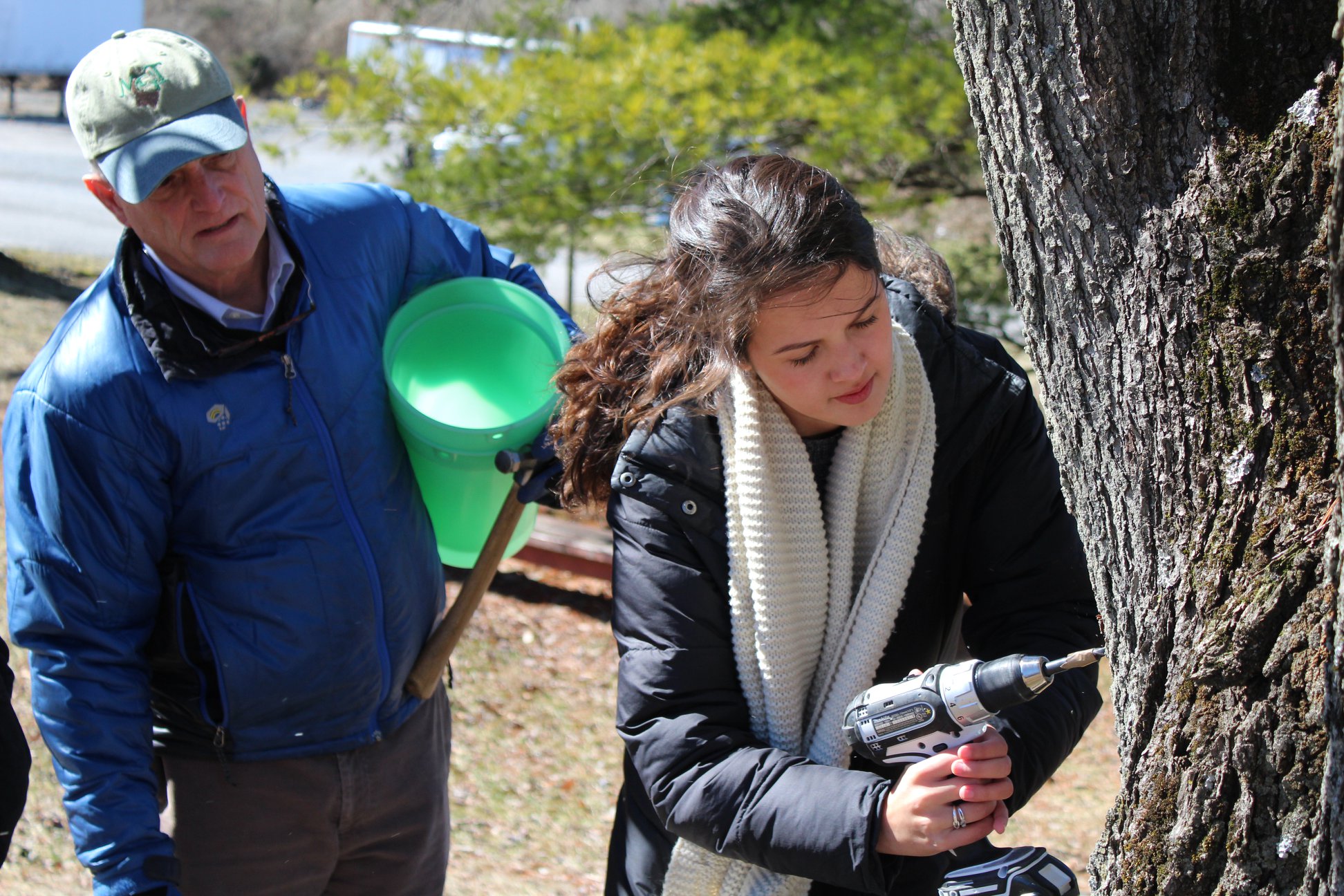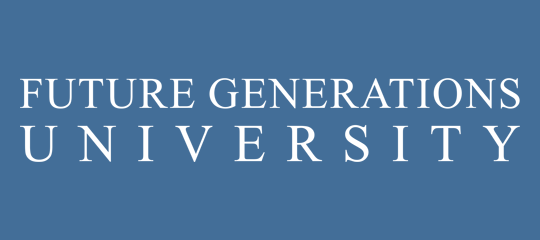
TOM HAMMETT
Professor
Education
- B.S. – University of New Hampshire, 1974
- M.S. – University of Georgia, 1986
- Ph.D. – University of Georgia, 1991
Tom Hammett has 40 years’ experience with non-timber forest products (NTFPs), researching means to improve landowner and entrepreneur livelihoods through production, processing, and marketing of speciality agricultural products. A Research Faculty member at Future Generations University, he also serves as a Professor of Sustainability, Innovation and Design in the Department of Sustainable Biomaterials in Virginia Tech’s College of Natural Resources and Environment and currently focuses on the use of natural materials, such as bamboo and hemp, and nature-based enterprises.
He pairs his outreach for human and institutional capacity development in agriculture and natural resources with experiences as the director of a major global agriculture training and education project. This dual skillset will help build training opportunities in agriculture, natural resources, and forest sustainability that is appropriate for the Appalachian region.
He is active participant in regional NTFP research and outreach programs. He currently serves in leadership roles in three relevant research and outreach programs: to identify success factors in agroforestry and forest farming; to develop maple syrup products and markets; and a Virginia landowner livelihood and tree syrup development program.His work as Research Faculty member with Future Generations University focuses on developing and supporting NTFP educational and research programs throughout the Appalachian region. He has worked closely with many local partners in Central Appalachia to utilize indigenous forestry and agriculture resources to address social and economic challenges.
His international experience with NTFPs will also contribute to this project. He assessedthe potential for local market and enterprise development in Asia, developedteaching and learning capacityin several countries in Africa, Central America, and Asia, anddevelopedglobal NTFP distance learning resources. His work also linkedNTFPsand ecosystem services withusing forests to cope with infectious diseases (i.e., HIV/AIDS), and developed market protocols for specialty crops and community-basedenterprises. He has publishedone book on the region’s forest products, numerous technical reports, training manuals and extension materials, and over forty peer-reviewed articles and publications.
- Liu, L., Sun, X., and Hammett, A. L. 2023. Chinese Consumers’ Attitudes Toward Certified Wood Products. Forest Products Journal, 73(4), 320-325. doi:10.13073/FPJ-D-23-00002 Published: 2023-01-01.
- Hammett, A. L. 2023. Festival & Farmers’ Markets. A Guide to Educational Resources for Appalachian Agroforestry. Agroforestry in Appalachia (Series). Livelihoods Knowledge Exchange Network. Lexington, KY. 5 Pp.
- Hammett, A. L. 2023. Laurel Fork Sapsuckers: A Case Study for Appalachian Agroforestry. Agroforestry in Appalachia (Series). Livelihoods Knowledge Exchange Network. Lexington, KY. 3 Pp.
- Hammett, A. L. 2023. Understory Botanicals and Eatables: A Guide to Educational Resources for Appalachian Agroforestry. Agroforestry in Appalachia (Series). Livelihoods Knowledge Exchange Network. Lexington, KY. 5 Pp.
- Hammett, A. L. 2023. Branching Out: Alternative Tree Saps Integrated with Agroforestry. A Case Study for Appalachian Agroforestry. Agroforestry in Appalachia (Series). Livelihoods Knowledge Exchange Network. Lexington, KY. 5 Pp.
- Hammett, A.L., C. Herby, and W. Shepard. 2023. The Tonoloway Black Walnut Vacuum Study. For the “Tapping new forest farming opportunities in Central Appalachia through Black Walnut syrup production” project. Report for 2021 Southern SARE On-Farm Research Grant. Submitted to USDA NIFA Southern SARE, Griffin, GA. 15 pages plus Annexes.
- C. Herby, A. L. Hammett, and W. Shepard. 2023. Black Walnut Syrup Sensory Panel Report. For the “Tapping new forest farming opportunities in Central Appalachia through Black Walnut syrup production” project. Report for 2021 Southern SARE On-Farm Research Grant. Submitted to USDA NIFA Southern SARE, Griffin, GA. 10 pages plus Annexes.
- Raj K. GC, Ralph P. Hall and A. L. (Tom) Hammett (2022) Thinking beyond domestic water supply: approaches to advance multiple-use water systems (MUS) in the rural hills of Nepal, Water International, 47:1, 92-113, DOI: 10.1080/02508060.2021.1966976
- Eifert, Joell, Renee Boyer, Tom Hammett, Emily Pomfrey Wells, and Lily Yang. 2019. What do I need to know to sell maple syrup at the farmers market? Publication number FST-311 Cooperative Extension Service, Virginia Tech, Blacksburg, VA.
- Boley, B. Bynum, Nancy McGehee, and A. L. Hammett. 2017. Importance-performance analysis (IPA) of sustainable tourism initiatives: The resident perspective. Journal of Tourism Management. Vol. 54. Pages 66-77.
- Khadka, C. B., A.L. Hammett, A. Singh, M. K. Balla, and Y. P. Timilsina. 2016. Ecological Status and Diversity Indices of a Himalayan Medicinal Orchid Dactylorhiza hatagirea (D.Don) Soo) and its Associates in Lete village of Mustang District. BankoJanakari Vol. 26. No. 1 p. 45-52.
- Barany, Marc E., A. L. Hammett, K. Stadler and E. Kegni. 2004. Non-timber forest products in the food security and nutrition of smallholder households afflicted by HIV/AIDS in sub-Saharan Africa. Forests, Trees and Livelihoods 14: 3-18.
- Greene, Sarah M., A. L. Hammett, and Shashi Kant. 2000 Non-Timber Forest Products Marketing Systems and Market Players in Southwest Virginia: Crafts, Medicinal and Herbal, and Specialty Wood Products. Journal of Sustainable Forestry, Vol. 11(3): 19-40.
- Hammett, A. L. and J. L. Chamberlain. 1998. Sustainable Use of Non-Traditional Forest Products: Alternative Forest-based Income Opportunities. In: Proceedings of Natural Resources Income Opportunities on Private Lands Conference. April 5-7, 1998. Hagerstown, Maryland. Hosted by University of Maryland. Pp 141–147.
- Oct. 1, 2020 – Sept. 30, 2023 – Co-PI for “Accessing South Atlantic Markets for US Maple Syrup”: educating consumers and enhancing distribution networks. In collaboration with Future Generation University; funded by USDA through an ACER Access Grant.
- May 1, 2020 – Oct. 1, 2921 – Co-PI for“Sharing Successes in Forest Farming across Central Appalachia; in collaboration with Livelihoods Knowledge Exchange Network; funded by USDA National Agroforestry Center
- Oct. 1, 2018 to Sept. 30, 2021 – PI for “Expanding Livelihood Options for Virginia Land Owners Through Tree Syrup Production”; Specialty Crop Block Grant, funded by USDA, through the VA Dept. of Agriculture and Consumer Services
- Visiting Professor, Agriculture and Forestry University (AFU), Nepal – March 2017 –present; develop AFU extension and outreach capacity as full land grant university
- Member, Appalachian Caucus at Virginia Tech – Jan. 2016 to present

